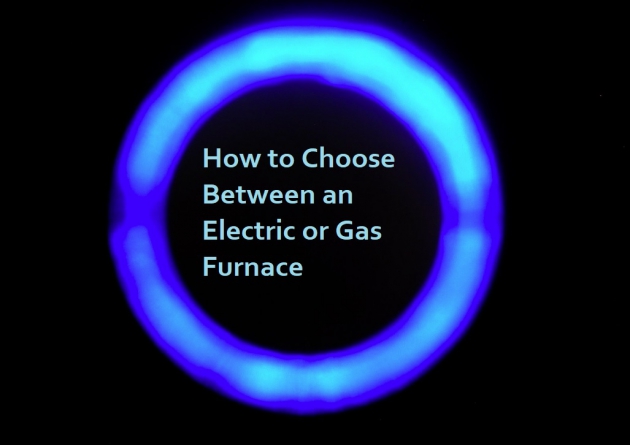A furnace is a vital part of an HVAC system to keep your home comfortable throughout the year. In most cases, it’s a great idea to get the furnace at the same time as the air conditioning system. Why? Well matched heating and cooling systems tend to perform better, they have improved energy efficiency characteristics, and they are easier to work on.
Regular maintenance is another key consideration if you want to get the best return on your investment in your indoor comfort, But one of the first things that anyone considering a new furnace will encounter is the choice between gas and electric. This is not an easy decision to make, and it has ramifications that you will need to live with for many years. In this article, we will take a look at gas and electric furnaces in more detail to help you make informed choices.
A Brief Primer on Furnaces
The most common type of heater in the U.S. is a furnace, and they are typically powered by natural gas or electricity. There are also oil powered furnaces, but they tend to be restricted in use, and a discussion of their pros and cons is beyond the scope of this article. If you’re going to choose a furnace, it’s likely that your choice will be restricted to natural gas or electricity most of the time.
The average useful lifespan for a furnace is 10-15 years, and you will be relying on the equipment to keep your home warm. If the furnace is regularly serviced, the frequency of repairs will be reduced, and the expected lifespan could be at the upper end of the age range. The obvious question is, “Which type of furnace is best for my home?” and yet this is a hard question to answer. After all, every home is different, and you need to consider the advantages and disadvantages of these different furnace types carefully.
A Brief Explanation of Forced-Air Heating
There are many differences between gas and electric furnaces, but it’s important to understand that they are both forced-air heaters. They are fundamentally similar in the way that they heat your home or business. In a forced-air heating system, the treated air is pushed throughout the home via a ductwork system. The air is then delivered to the room through an air vent which makes this a very direct way to heat a home. Using a radiant heat system or a boiler is a very different method that we won’t cover here. But, forced-air and other home heating methods are controlled via a thermostat.
The thermostat is the brain of the heating system, and many problems can be solved there. Making sure that the thermostat is turned on, set to the correct temperature, powered with batteries, and that the internal sensor is clean are all worth checking if you have problems. Now that you understand the similarities let’s take a closer look at how electric and gas furnaces differ.
The Main Differences Between Electric and Gas Furnaces
The main ways that electric and gas furnaces differ is in their affordability, energy efficiency, and other factors that can contribute to your specific living conditions. Let’s examine electric and gas furnaces in more detail:
Electric Furnaces
First, it’s important to state that many homes have no easy access to natural gas. If your home falls into this category, there isn’t much of a choice to make, and you’re going to be limited to an electric furnace. This type of furnace is a good choice if your home has no access to natural gas piping infrastructure and you have no desire to install any. Installing gas pipes in your home is a major undertaking that many people want to avoid.
To meet this need, there are a wide variety of electric furnace makes and models on the market. An electric heater is a viable choice if you experience milder winters. The best models have good energy efficiency, and every home has the capability to run these types of furnaces. But, an electric furnace is not the best option if you need to deal with more extreme winter weather conditions. As the weather gets colder, the furnace will require more electricity to run, and this will degrade the energy efficiency significantly. During periods of extreme cold, an electric furnace can cost you a lot of money to run on a daily basis.
Gas Furnaces
A gas furnace is a popular option for homeowners that have access to natural gas and the supporting infrastructure in their homes. They are affordable, powerful, and energy efficient with a 90%+ AFUE rating which is a heat ratio of almost 1:1. If you don’t have natural gas piping, the initial investment is considerable in comparison to a simple electric furnace hookup. But, natural gas is a very affordable way to power other appliances, including ovens, dryers, water heaters, and more. When you consider that natural gas burns clean, it’s affordable, and is safe to use; it’s easy to see why many people prefer to use it in their homes.
Professional Installation and Regular Maintenance
It doesn’t matter which type of furnace you choose if you opt for an amateur installation and you ignore the maintenance requirements. With both gas and electric furnaces, there can be significant losses in terms of performance and energy efficiency if the installation is wrong. It’s also worth mentioning that a new furnace is a significant investment, and it makes sense to protect it.
Regular maintenance is important too, because the furnace will lose performance and efficiency for each year of operation. An annual inspection and maintenance can also reduce the frequency of repairs and extend the useful lifespan of your heating system. The best time to schedule a maintenance visit is before the heating season begins to get ready for winter.
If you need a professional furnace installation or some essential maintenance for your heating system, contact your local HVAC specialist.

